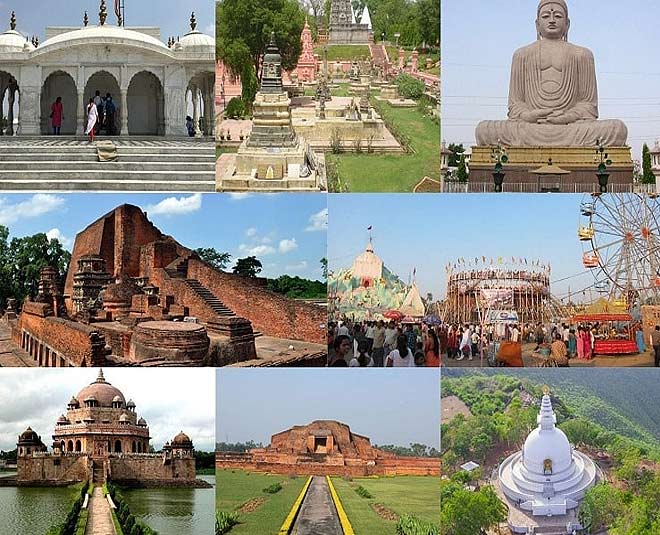Nestled in the heart of the Indian subcontinent, the captivating history of Bihar unfolds like a mesmerizing tapestry, woven with threads of ancient civilizations, dynastic reigns, and cultural enlightenment. From the dawn of human civilization to the present day, Bihar’s historical voyage has shaped the region’s identity, leaving an indelible imprint on its people and heritage. This article embarks on a captivating journey through the annals of time, unearthing the remarkable history of Bihar and shedding light on its intriguing past.

Ancient Origins and Civilization
The roots of Bihar’s history extend deep into antiquity, tracing back to the cradle of the Indus Valley Civilization. Situated at the crossroads of ancient trade routes, this region fostered the growth of early settlements and facilitated cultural exchanges. Over the centuries, Bihar witnessed the rise and fall of several civilizations, each contributing to its rich historical legacy.
The Glorious Mauryan Dynasty
A significant chapter in Bihar’s history unfolded with the emergence of the Mauryan dynasty around 322 BCE. Pataliputra, modern-day Patna, served as the majestic capital under the rule of Chandragupta Maurya. The empire’s zenith arrived during the reign of Ashoka the Great, whose visionary leadership expanded the Mauryan influence across vast territories. Ashoka’s conversion to Buddhism and his efforts to propagate its teachings left an enduring impact on Bihar’s cultural landscape.
Scholarly Haven: Nalanda University
Bihar’s historical narrative is adorned with the brilliance of Nalanda University, a venerable institution of learning founded in the 5th century CE. Nestled near modern-day Rajgir, Nalanda attracted scholars and students from distant lands, cultivating a vibrant intellectual environment. Disciplines ranging from philosophy and astronomy to medicine and linguistics flourished within its hallowed walls, cementing Nalanda’s legacy as a global center of education.
Medieval Marvels and Dynastic Flourishes
As the medieval period unfolded, Bihar witnessed the ascent of several influential dynasties. The Gupta dynasty, renowned for its cultural patronage, left an indelible impact on the region. The Pala dynasty, succeeding the Guptas, continued this tradition, fostering the development of art, literature, and philosophy. However, Bihar’s history also bore witness to invasions and conflicts, ushering in periods of instability and change.
Colonialism and the Struggle for Independence
The 17th century ushered in the colonial era, with Bihar becoming a significant part of the British East India Company’s dominion. The struggle for India’s independence reverberated strongly in Bihar’s soil. Noteworthy figures like Mahatma Gandhi and Rajendra Prasad spearheaded movements against British rule, their efforts leaving an indomitable mark on the state’s history.
Modern Bihar: Challenges and Progress
Post-independence, Bihar embarked on a journey of socio-economic transformation. Efforts were made to address developmental challenges and uplift the lives of its people. However, the state also faced obstacles such as poverty, illiteracy, and political volatility. Nonetheless, Bihar’s spirit remained unbroken as it continued to strive for progress and growth.
Fascinating Facts about Bihar
Bodh Gaya: Bihar boasts the sacred site of Bodh Gaya, where Siddhartha Gautama attained enlightenment, becoming Buddha. The Mahabodhi Temple, a UNESCO World Heritage site, stands as a testament to this profound event.
Chhath Puja: The vibrant Chhath Puja, celebrated with fervor, honors the Sun God. This unique festival showcases Bihar’s cultural diversity and spiritual heritage.
Sonepur Mela: The Sonepur Cattle Fair, a captivating amalgamation of trade and tradition, draws visitors to witness one of the world’s largest animal fairs.
Political Legacy: Bihar has significantly contributed to India’s political landscape, nurturing leaders who played pivotal roles in shaping the nation’s destiny.
Agrarian Heritage: The fertile Gangetic plains of Bihar have nurtured agriculture for centuries, bearing testament to its essential role in India’s agrarian history.
Conclusion
The history of Bihar is a captivating odyssey through time, etched with tales of triumphs, challenges, and cultural brilliance. From its ancient origins to the modern era, Bihar’s journey reflects the resilience and dynamism of its people. As the state embraces the future, it remains firmly rooted in its storied past—a past that continues to inspire, educate, and captivate those who seek to unravel its mysteries.
In closing, the history of Bihar stands as a testament to the enduring spirit of human endeavor, inviting us to delve deeper into its realms and discover the treasures that lie within.
